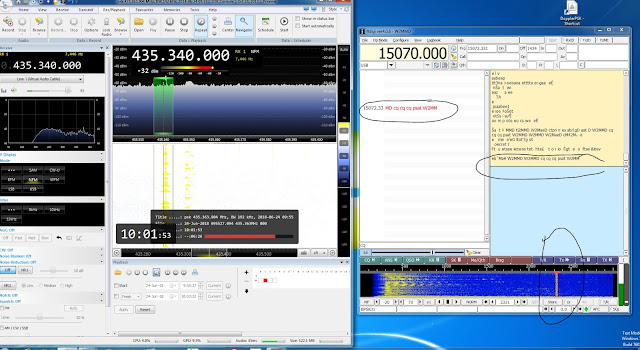Finally had some success with PSK, and am starting to understand how it works. This was on Sunday of Field Day during which other stations may be working this satellite. Previously I only heard the W3ADO beacon, which occurs only about every 5 minutes. Now there were multiple stations on the waterfall. The transmitter desenses the downlink most of the time, although I finally got the audio setting so that I can hear our signal in the downlink (albeit with significant desense). The beacon usually appears around 500 hz, but out signal appears around 2.2 kHz, which would be set by the DopplerPSK program. I was running full power on 10 meters with the audio gain around 10:00 on the 847. Also note the other PSK signals that aren't being sent with DopplerPSK. Those are slanted because of the Doppler shift and can't be copied. Only sigs with DopplerPSK stay on freq and can be decoded. More on PSK from NO-84 K2za provided this link: https://www.2m0sql.com/2018/10/29/usin



